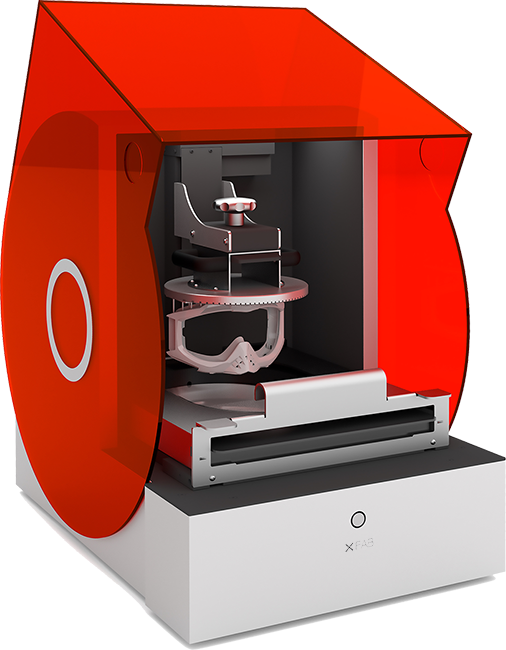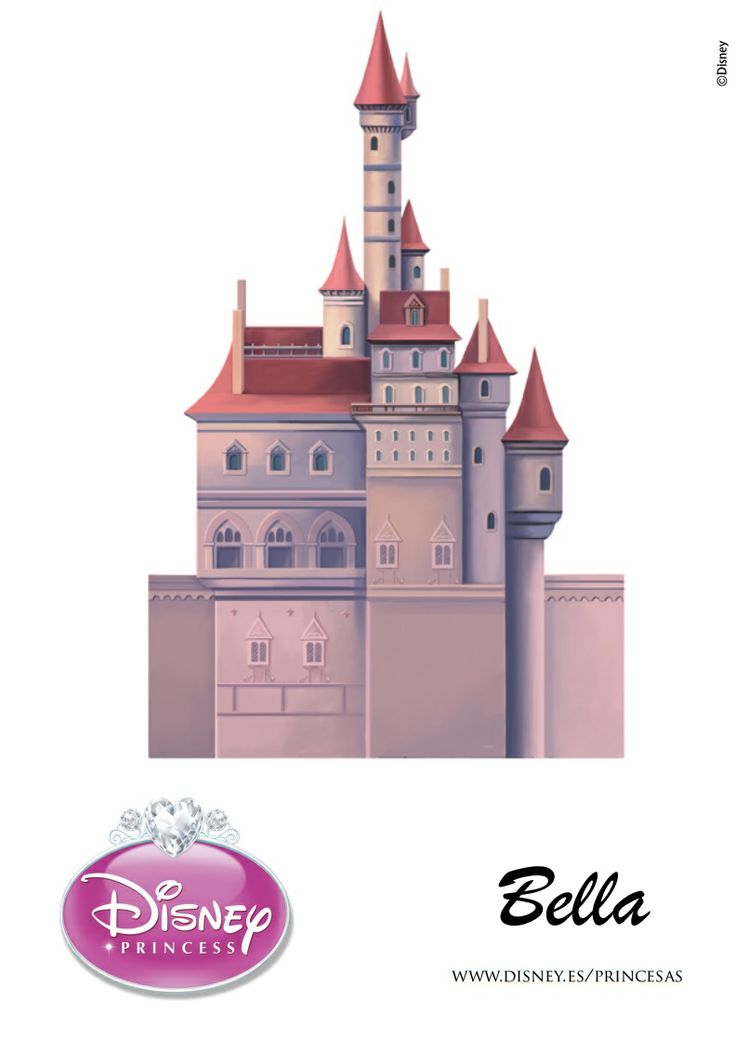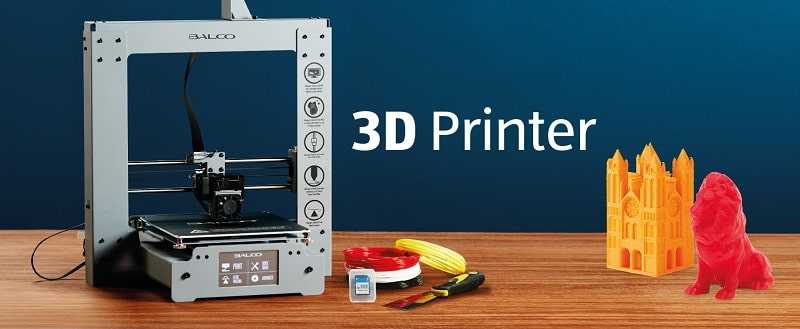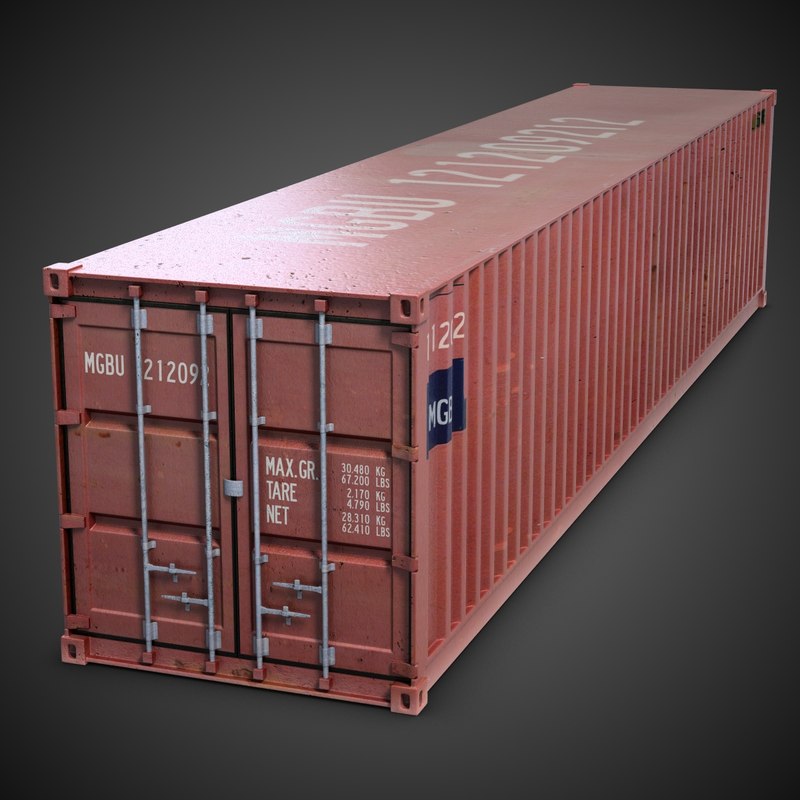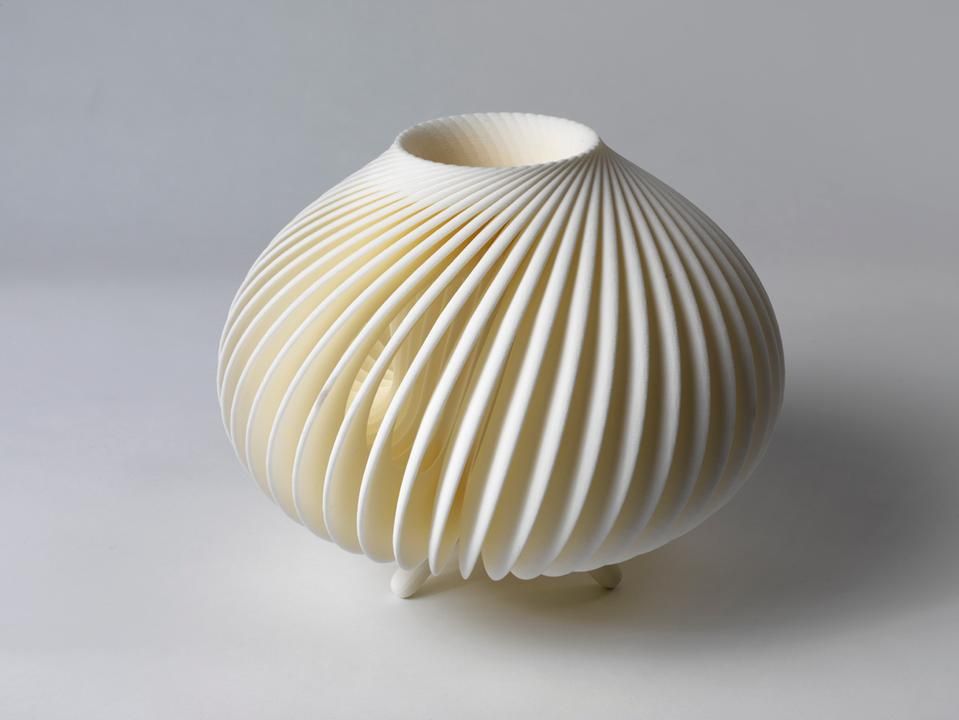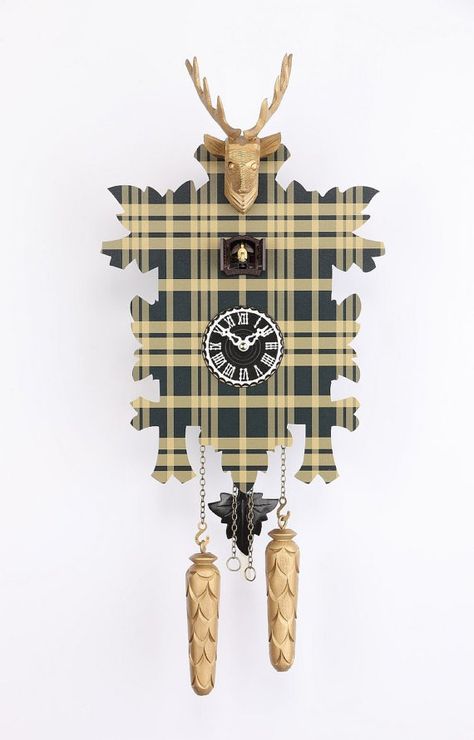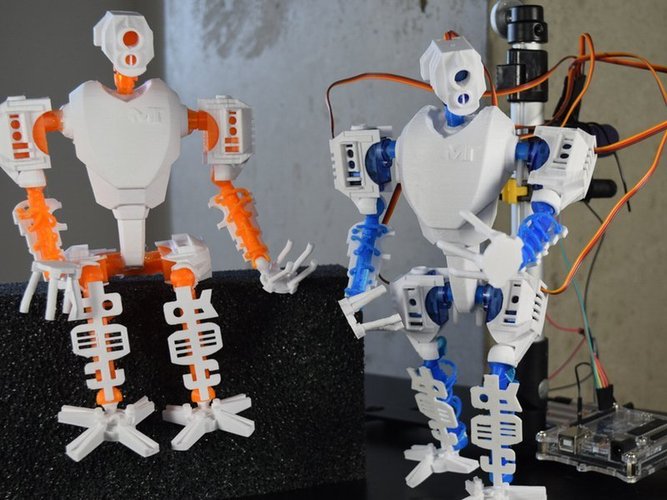3D printer introduced
When Was 3D Printing Invented? The History of 3D Printing -
May 15, 2020
When you first heard the words “3D printing” did you imagine a super futuristic technology, like in the movies but, when was it really invented?
While the term 3D printing may sound like something you’d expect to hear in a science fiction novel, the history of 3D printing, also known as additive manufacturing, is longer than you might think.
Keep reading to learn about the history of 3D printing, and our BCN3D predictions on where we see this technology going in the future.
The History of 3D Printing in 3 PhasesThe 1980s: When Was 3D Printing Invented?The first documented iterations of 3D printing can be traced back to the early 1980s in Japan. In 1981, Hideo Kodama was trying to find a way to develop a rapid prototyping system. He came up with a layer-by-layer approach for manufacturing, using a photosensitive resin that was polymerized by UV light.
Although Kodama was unable to file the patent requirement of this technology, he is most often credited as being the first inventor of this manufacturing system, which is an early version of the modern SLA machine.
Across the world a few years later, a trio of French researchers was also seeking to create a rapid prototyping machine. Instead of resin, they sought to create a system that cured liquid monomers into solids by using a laser.
Similar to Kodama, they were unable to file a patent for this technology, but they are still credited with coming up with the system.
That same year, Charles Hull, filed the first patent for Stereolithography (SLA). An American furniture builder who was frustrated with not being able to easily create small custom parts, Hull developed a system for creating 3D models by curing photosensitive resin layer by layer.
In 1986 he submitted his patent application for the technology, and in 1988 he went on to found the 3D Systems Corporation.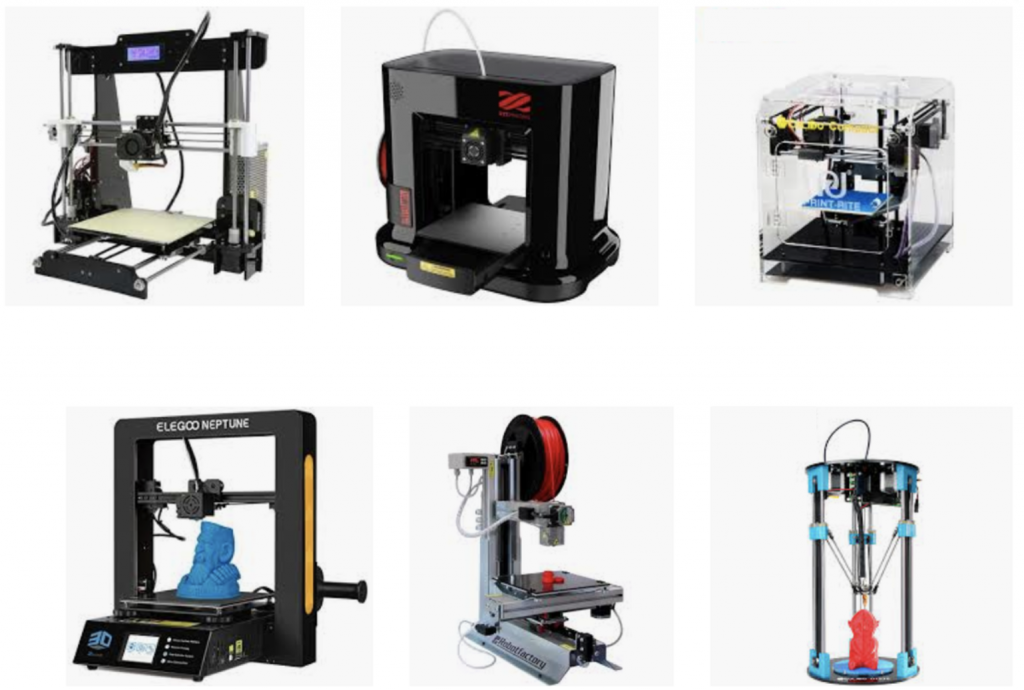 The first commercial SLA 3D printer, the SLA-1, was released by his company in 1988.
The first commercial SLA 3D printer, the SLA-1, was released by his company in 1988.
But SLA wasn’t the only additive manufacturing process being explored during this time.
In 1988, Carl Deckard at the University of Texas filed the patent for Selective Laser Sintering (SLS) technology. This system fused powders, instead of liquid, using a laser.
SLS fabrication machines in the Fundació CIM warehouseFused Deposition Modeling (FDM) was also patented around the same time by Scott Crump. FDM, also called Fused Filament Fabrication, differs from SLS and SLA in that rather than using light, the filament is directly extruded from a heated nozzle. FFF technology has gone on to become the most common form of 3D printing we see today.
These three technologies are not the only types of 3D printing methods that exist. But, they are the three that serve as the building blocks that would lay the groundwork for the technology to grow and for the industry to be disrupted.
In the 90s, many companies and startups began popping up and experimenting with the different additive manufacturing technologies. In 2006, the first commercially available SLS printer was released, changing the game in terms of creating on-demand manufacturing of industrial parts.
CAD tools also became more available at this time, allowing people to develop 3D models on their computers. This is one of the most important tools in the early stages of creating a 3D print.
During this time, the machines were very different from those that we use now. They were difficult to use, expensive, and many of the final prints required a lot of post-processing. But innovations were happening every day and discoveries, methods, and practices were being refined and invented.
Then, in 2005, Open Source changed the game for 3D printing, giving people more access to this technology. Dr. Adrian Bowyer created the RepRap Project, which was an open-source initiative to create a 3D printer that could build another 3D printer, along with other 3D printed objects.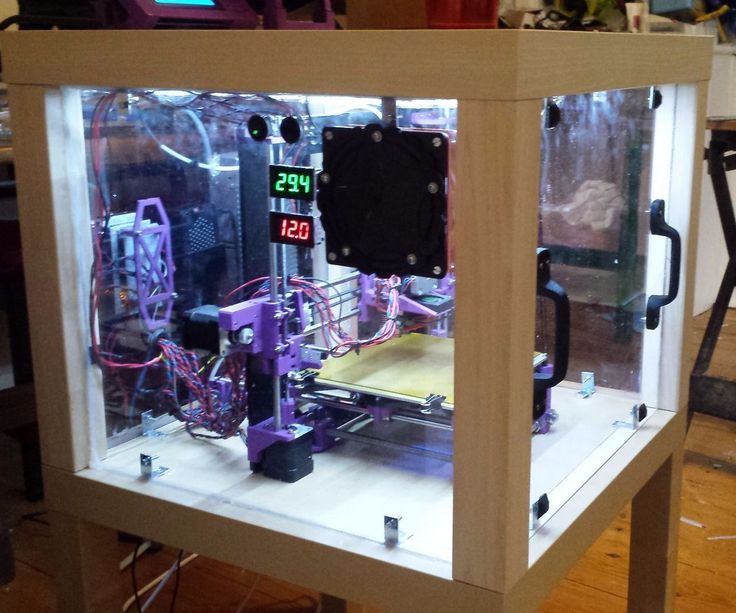
In 2008, the first prosthetic leg was printed, propelling 3D printing into the spotlight and introducing the term to millions across the globe.
Then, in 2009, the FDM patents filed in the 80s fell into the public domain, altering the history of 3D printing and opening the door for innovation. Because the technology was now more available to new companies and competition, the prices of 3D printers began to decrease and 3D printing became more and more accessible.
3D Printing NowIn the 2010s, the prices of 3D printers started to decline, making them available to the general public. Along with the lowering prices, the quality and ease of printing also increased.
The materials that printers use have also evolved. Now there are a variety of plastics and filaments that are widely available. Materials like Carbon Fiber and Glass Fiber can also be 3D printed.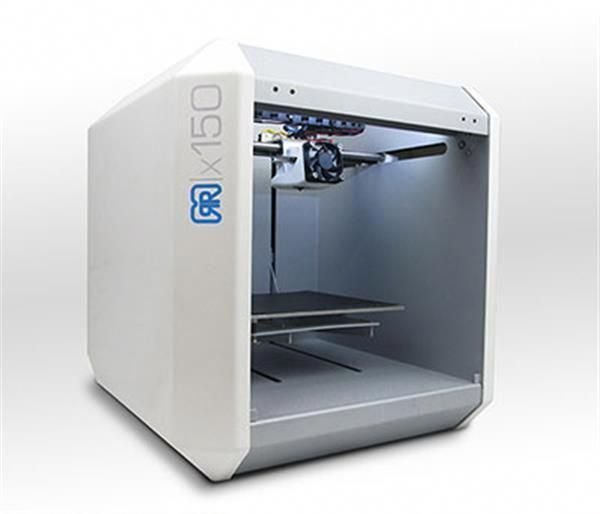 Some creatives are even experimenting with printing materials like chocolate or pasta!
Some creatives are even experimenting with printing materials like chocolate or pasta!
In 2019, the world’s largest functional 3D printed building was completed. 3D printing is now consistently used in developing hearing aids and other healthcare applications, and many industries and sectors have adopted the technology into their everyday workflow.
It’s safe to say that the history of 3D printing is still being written.
Innovations and ideas are created every day. We’re very excited to see what’s next!
From the 80s to Today
3D Learning Hub
See all categories
Contents:
- Introduction
- The 1980s: Birth of the main 3D Printing Techniques
- The 1990s: Emergence of the Main 3D Printers Manufacturers & CAD tools
- The 2000s: 3D Printing Gains Media Visibility
- The 2010s: Years of Visibility, Innovation and Hopes for 3D Printing
- What about now, and what about the future?
Introduction
3D printing is not as new as you may think! Actually, FDM (Fused Deposition Modeling) technology became quite popular and impressive for the general public around 2009 because of its media coverage.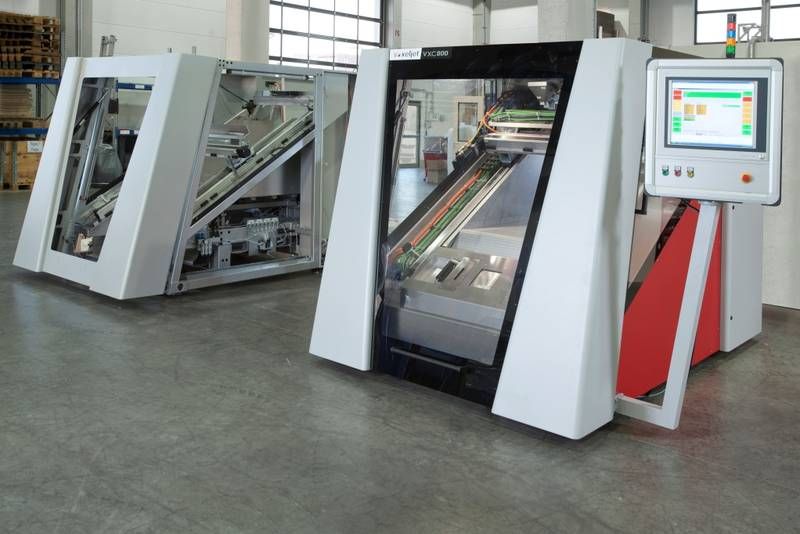 At some point, a lot of people actually thought that FDM was the only additive manufacturing technology. But FDM is not even the first 3D printing technology developed, and 3D printing actually started in the 1980s.
At some point, a lot of people actually thought that FDM was the only additive manufacturing technology. But FDM is not even the first 3D printing technology developed, and 3D printing actually started in the 1980s.
Here is a quick 3D printing timeline from the 1980s to today. The history of 3D printing is fascinating. The first machines, the great expectations, and the many 3D printing applications that are now flourishing. Let’s take a look back at the 3D printing history.
The 1980s: Birth of the main 3D Printing Techniques
The concept of 3D printing has been imagined back in the 1970’s, but the first experiments are dated from 1981. The first 3D printing attempts are granted to Dr Kodama for his development of a rapid prototyping technique. He was the first to describe a layer by layer approach for manufacturing, creating an ancestor for SLA (or Stereolithography): a photosensitive resin was polymerized by an UV light. Unfortunately, he did not file the patent requirement before the deadline.
A few years later, a French team of engineers, Alain Le Méhauté, Olivier de Witte and Jean-Claude André, was interested by the stereolithography but abandoned due to a lack of business perspective. This 3D printing attempt was also using a stereolithography process.
If you want more information about these first experiences, check out our interview of Jean-Claude André. At the same time, Charles Hull was also interested in the technology and submitted a first patent for stereolithography (SLA) in 1986. He founded the 3D Systems Corporation and in 1988, released the SLA-1, their first commercial product.
If SLA was the first 3D printing technology developed, what about SLS (Selective Laser Sintering) and FDM (Fused Deposition Modeling) back then?
In 1988, at the University of Texas, Carl Deckard brought a patent for the SLS technology, another 3D printing technique in which powder grains are fused together locally by a laser.
In the meantime, Scott Crump, a co-founder of Stratasys Inc.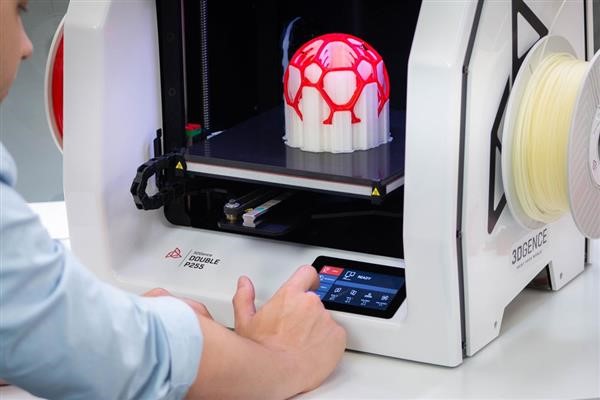 filed a patent for Fused Deposition Modelling (FDM). In less than ten years, the three main technologies of 3D printing were patented and 3D printing was born!
filed a patent for Fused Deposition Modelling (FDM). In less than ten years, the three main technologies of 3D printing were patented and 3D printing was born!
To resume:
1980: First patent by japanese Dr Kodama Rapid prototyping
1984: Stereolithography by French engineers then abandoned
1986: Stereolithography taken up by Charles Hull
1988: First SLA-1 machine
1988: First SLS machine by DTM Inc then buy by 3D system
The SLA 1The 1990s: Emergence of the Main 3D Printers Manufacturers & CAD tools
Now that the basics were established, the evolution of additive manufacturing is pretty fast. The main 3D printers manufacturers are emerging, new technologies are perfected, and 3D modeling tools start to be developed as well, bringing additive manufacturing to the next level.
In Europe, EOS GmbH was founded and created the first EOS “Stereos” system for industrial prototyping and production applications of 3D printing. Its industrial quality is today recognized worldwide in SLS technology (Selective Laser Sintering technology) for plastics and metals.
Its industrial quality is today recognized worldwide in SLS technology (Selective Laser Sintering technology) for plastics and metals.
In 1992, the Fused Deposition Modeling patent was issued to Stratasys, which developed many 3D printers for both professionals and individuals. From 1993 to 1999, the main actors of the 3D printing sector emerged with various techniques:
ZCorp and binder jetting: Based on MIT’s inkjet printing technology, they created the Z402, which produced models using starch- and plaster‐based powder materials and a water‐based liquid binder
Arcam MCP technology and Selective Laser Melting.
At the same time, we can see that more and more new CAD tools, allowing to create 3D models, are becoming available and developed, with, for example, the creation of Sanders Prototype (now known as Solidscape), one of the first actors to develop specific tools for additive manufacturing.
Charles Hull was awarded the European Inventor Award in the Non-European countries category, by the European Patent Office Price in 2014.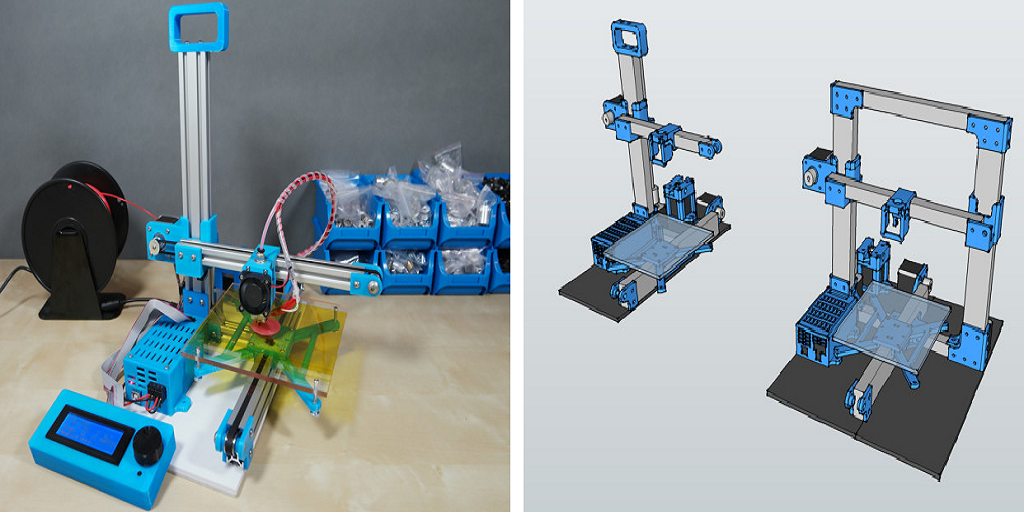
To resume:
1990: First EOS Stereos system
1992: FDM patent to Stratasys
1993: Solidscape was founded
1995: Z Corporation obtained an exclusive license from the MIT
1999: Engineered organs bring new advances to medicine
Charles Hull was awarded the European Inventor Award in the Non-European countries category, by the European Patent Office Price in 2014.The 2000s: 3D Printing Gains Media Visibility
In 2000, the millennium saw the first 3D printed kidney, but we would have to wait 13 more years to see it transplanted into a patient. 3D printed kidneys are now working perfectly and researchers are experimenting on accelerated growth to transplant organs very rapidly.
2004 was the year of the initiating of the RepRap Project which consists of a self-replicating 3D printer. Yes, it is possible to 3D print a 3D printer. This open-source project led to the spreading of the FDM 3D desktop 3D printers, and of the popularity of the technology in the makers community.
In 2005, ZCorp launched the Spectrum Z510, the very first high-definition color 3D printer.
In 2008, 3D printing reached an even greater media presence thanks to another medical application: the first 3D printed prosthetic limb.
This amazing medical 3D printing project incorporated all parts of a biological limb, was printed ‘as is’, without the need for any later assembly. Nowadays, combined with 3D scanning, 3D printed medical prosthesis and orthosis are more and more cheaper and faster to get for the patient. Moreover, these prostheses are more and more optimized and adapted to the morphology of the patient. Additive manufacturing is bringing new opportunities regarding mass-customization.
http://www.ufunk.net/en/tech/exo-prosthetic-leg/2009 was the year in which the FDM patents fell into the public domain, opening the way to a wide wave of innovation in FDM 3D printers, a drop of the desktop 3D printers price, and consequently, since the technology was more accessible, an increased visibility.
2009 was also the year Sculpteo’s online 3D printing service was created, one of the pioneers of the now flourishing online 3D printing services, another step toward 3D printing accessibility!
To resume:
2000: a 3D printed working kidney is created
2000: MCP Technologies (an established vacuum casting OEM) introduced the SLM technology
2005: Z Corp. launched Spectrum Z510. It was the first high-definition color 3D Printer on the market.
2006: An open source project is initiated (Reprap)
2008: The first 3D printed prosthetic leg
2009: FDM patents in the public domain
2009: Sculpteo is created
The 2010s: Years of Visibility, Innovation and Hopes for 3D Printing
The recent years have been very important for 3D Printing. With the FDM patent expiration, the first years of the decade have become the years of 3D printing. Additive manufacturing is then becoming a real and affordable prototyping and production technique for businesses, opening new possibilities
In 2013, President Barack Obama mentioned 3D printing as a major issue for the future in his State of the Union speech, which made “3D printing” an absolute buzzword.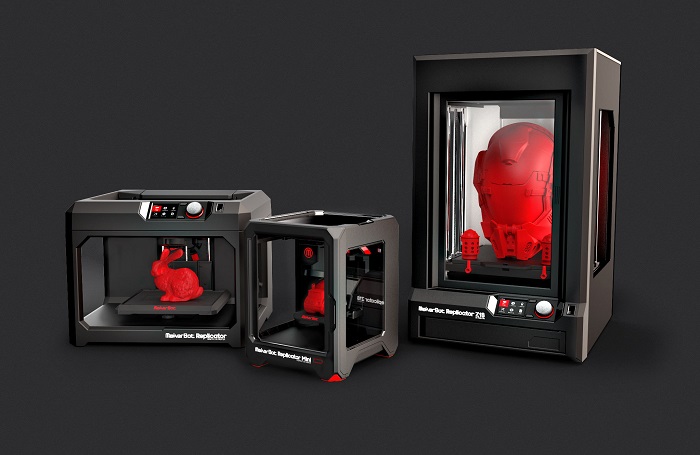
It is now very present in the general public’s mind, and in policy makers’ decisions. The technology is forever progressing, just as are the uses of this technology. More and more small and big companies take advantage of the low prototyping price that 3D printing offers, and have fully integrated it in their iteration, innovation and production processes.
In 2010, Urbee was the first 3D printed car. Its body was fully 3D printed using a very large 3D printer. Now, the 3D printed car is progressively becoming a reality, and additive manufacturing is taking more and more space in the automotive sector. Indeed, from the integration of 3D printing technology for the tooling process, to 3D printed car parts, additive manufacturing appears to be quite helpful on many levels, helping to go through brand new challenges.
credit: EDAG3D printing technology keeps on evolving, and progressing. New 3D printers are being issued regularly, they are more efficient, they print faster, and they give access to new 3D printing materials.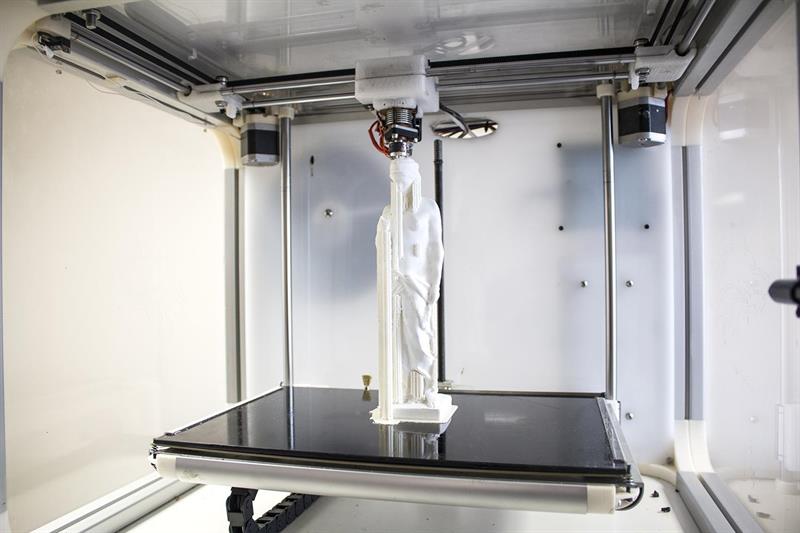 Technologies like CLIP (DLS) are being developed by Carbon, making the printing process even faster and more accurate than ever.
Technologies like CLIP (DLS) are being developed by Carbon, making the printing process even faster and more accurate than ever.
If you check the offers of our online 3D printing service, you will find a wide-range of materials from strong and accurate 3D printed resins such as Rigid Polyurethane, to 3D printed flexible plastic, and heat resistant 3D printed metals: everything is now printable, making it easy for companies to find materials adapted to their needs and products.
New 3D printing materials are being explored every day, from Daniel Kelly’s lab who’s 3D printing bone to the French startup XtreeE, who’s 3D printing concrete to revolutionize the construction industry! Indeed, regarding architecture application, 3D printing concrete is now a real thing, and families are starting to move into 3D printed houses. The first family to move into a 3D printed house actually did in 2018. The house is 1022 square feet, is perfectly habitable and took two days to print.
To resume:
2010: Urbee is the first 3D printed prototype car presented
2011: Cornell University began to build 3D food printer.
2012: The first prosthetic jaw is printed and implanted
2013: “3D printing” in Obama’s State of the Union speech
2015: Carbon 3D issues their revolutionary ultra-fast CLIP 3D printing machine
2016: Daniel Kelly’s lab announces being able to 3D print bone
2018: The first family moves into a 3D printed house
The 2020s: the arriving of more advanced Additive Manufacturing materials
Additive manufacturing is now offering the possibility to create parts for demanding sectors using advanced materials such as extremely resistant and rigid materials, or professional flexible plastics: we call them high performance materials. It is also a way to implement more sustainable manufacturing using bio-based materials, with a series of Nylon PA11 materials. BASF and Sculpteo are combining their strengths to offer you these high-performance materials and help you go even further in your projects.
Some of these impressive materials are offering thermal resistance, chemical resistance, or even heat resistance for the most demanding applications.
You can try out some interesting materials such as Ultrasint® PA11 ESD and its electrostatic discharging properties, Ultrasint® PA11 CF reinforced with carbon fibers for more rigidity, Ultrasint® PA11 & MJF PA11 bio-based powders with great resistant properties, Ultrasint® PA6 FR a flame-resistant material, Ultrasint® PA6 MF mineral filled for more resistance, Ultrasint® TPU88A & TPU01 for resistance and flexibility
What about the future?
We can see today that 3D printing is revolutionizing big sectors such as automotive, architecture or medical. But where can this technology still improve?
3D Bioprinting is becoming a big subject for the medical field. Indeed, applications of 3D bioprinting could be numerous. You can easily see the diverse advantages of this technology. It could create human tissue for burn victims. It is also a way to create human organs, in order to perform organ transplants. We can see today that there is not enough donors and bioprinting could be an excellent, fast, and life saving solution.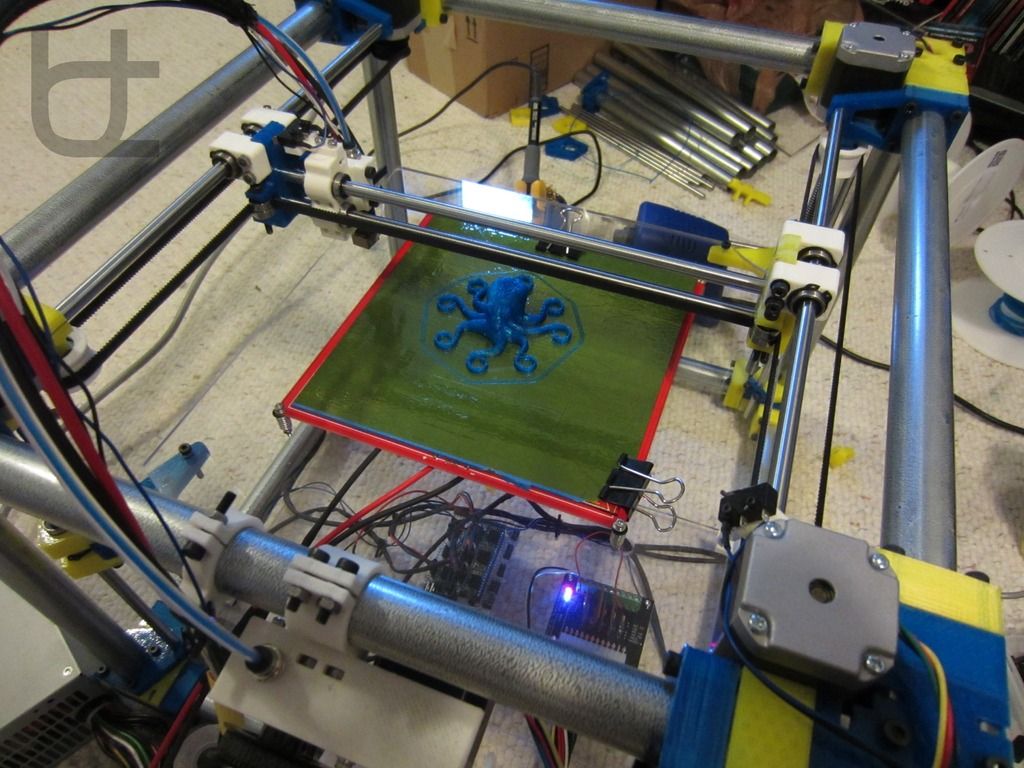 The 3D bioprinting technology could allow to create various tissue structures, such as kidney tissue, skin tissue.
The 3D bioprinting technology could allow to create various tissue structures, such as kidney tissue, skin tissue.
3D printing for architecture is also improving, but could really become bigger in the upcoming years. Projects faster to build, cheaper, and that avoid material waste: the benefits of this technology for the construction sector are numerous.
3D printing hasn’t reached its limits and many projects and amazing stories are waiting to be written. We already imagine this future in our article on the innovations to come in 3D printing and the top 10 materials 3D printing materials of the future that already exist!
Are you ready to write the future of 3D printing history, and improve your manufacturing process? Start your 3D printing project now. upload your 3D file here and choose among our 3D printing materials catalog to make the most of our 3D printing service.
Voir aussi:
- Return to Top
Get the latest 3D printing news delivered right to your inbox
Subscribe to our weekly newsletter to hear about the latest 3D printing technologies, applications, materials, and software.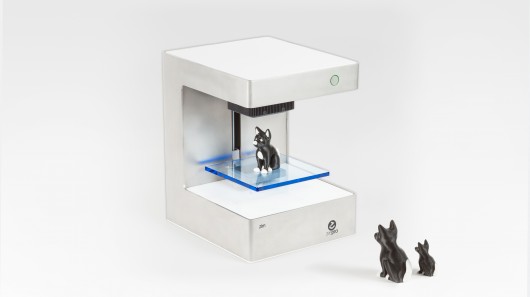
| 3DNews Technologies and IT market. Interesting news from the world of high-tech The world's first 3D printer for... The most interesting in the reviews 03/31/2014 [09:46], Dmitry Prikhodko There are printers that work with sugar and food coloring, using these components as consumables to create edible confectionery masterpieces. 3D printers have also been created that use both various types of plastic and metal powder to be sintered and layered to give the final shape. However, until recently, ceramics was not available as a material for 3D printing devices. The process of manufacturing porcelain products is accompanied by long processing and drying in special installations under the influence of high temperatures. The creation of even simple samples of porcelain utensils or dishes requires the attention of several technologists and goes through certain basic stages. Students from the University of Bristol decided to correct this misunderstanding and, under the guidance of Professor Stephen Hoskins, created a 3D printer that works with clay. This printer is able to create a full-fledged blank for heat treatment, which will later become a familiar ceramic cup, plate or original figurine. The presented samples of products on the video look very worthy: One thing to be clear: in fact, ideas for clay printers have been around before. The same company 3D Systems demonstrated at the beginning of this year the CeraJet device, whose functions include the manufacture of ceramic dishes. There were other prototypes of 3D printers, but they all had one thing in common: due to the type and structure of the consumables used, the products did not have sufficient reliability and quality. Simply put, it was not possible to create durable cups that would not differ in any way from dishes made by the classical manufacturing method. As for 3D Systems CeraJet, although this printer model is capable of printing dishes, it still formally appeared later than the project of Mr. Hoskins and his wards. About a year ago, the first working sample of a 3D printer was already demonstrated, so the professor, his colleagues and students deservedly received the title of pioneers in this field. www.hwdio.com Of course, the key steps in the process itself have not changed significantly. The printer takes over the main task - giving the clay product the necessary initial shape in order to proceed to the subsequent glazing and firing of its parts. Transferring a virtual model to a full-fledged clay blank requires a lot of time, but now the production of porcelain items will become available even at home. True, with an amendment, but the fact that the buyer has a large apartment, because the overall size of a 3D printer for ceramics is comparable to a washing machine. The composition of the base material with which the presented device "prints" was created and patented by the same professor Stephen Hoskins. The main one is clay powder, which, connecting layer by layer, turns into a solid figure. The device, according to its authors, should attract the attention of designers and artists, as well as major manufacturers of various ceramic products. The invention is not only purely scientific in nature, but is also intended to bring dividends to its creators in the form of income from sales of the device. Over time, the authors of the project plan to register their own company and open an online store. The printer itself will be further upgraded and subjected to the necessary improvements. Now the priority for all 3D printing professionals is to create a complete device that can work with glass. Source: If you notice an error, select it with the mouse and press CTRL+ENTER. Related materials Permanent URL: https://3dnews.ru/814849 Headings: News Hardware, interesting things from the world of hi-tech, on the cutting edge of science, 3D technologies, Tags: hardware, 3d printer, 3d printing, 3d systems, plate ← В past To the future → |
what a 3D printer can do
3D printing possibilities
Unfortunately, the current level of awareness in 3D technologies leaves much to be desired. It happens that even with a basic knowledge of 3D printers, the actual application of 3D printing remains incomprehensible to a number of users. To avoid such situations, we have prepared this article and will consider in detail all the possibilities of 3D printing.
Application of 3D printing
When it comes to the application of 3D printing, it is worth considering not only the existing possibilities, but also the prospects.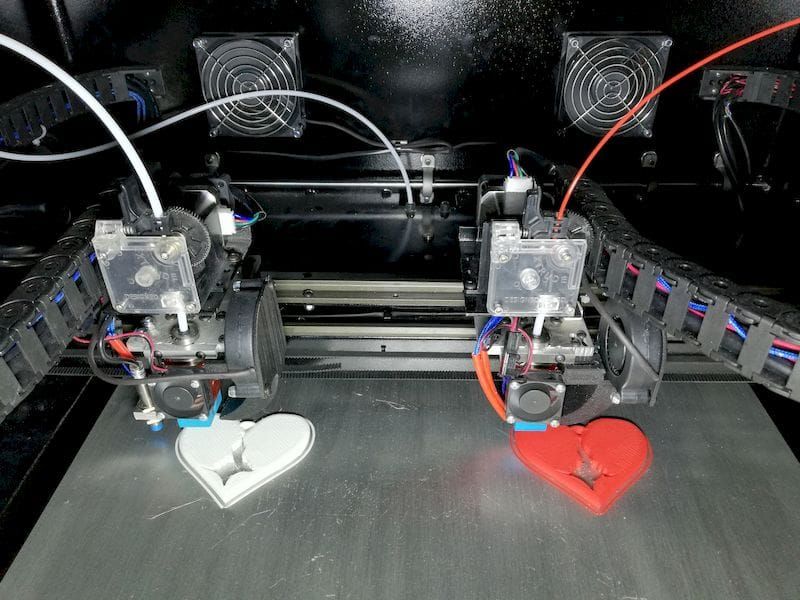 Already today, the application of 3D printing technology is extremely extensive and does not stop expanding. Of course, in the future we expect a large-scale distribution of additive techniques, but the practical application of 3D printing is available to everyone today. We will not delve into narrowly specific aspects of technology, such as 3D food printing, or bioprinting. Instead, let's talk about how 3D printing technology can be used by ordinary users with desktop 3D printers.
Already today, the application of 3D printing technology is extremely extensive and does not stop expanding. Of course, in the future we expect a large-scale distribution of additive techniques, but the practical application of 3D printing is available to everyone today. We will not delve into narrowly specific aspects of technology, such as 3D food printing, or bioprinting. Instead, let's talk about how 3D printing technology can be used by ordinary users with desktop 3D printers.
1. Prototyping
The best use of 3D printing is for its intended purpose. Rapid prototyping is not only the second name of the technique, but also the original goal of its development. Creating prototypes using 3D printing significantly reduces production time and costs. And thanks to the possibilities of 3D modeling, the range of designed parts is practically unlimited. Prototyping allows you to visually assess the possible shortcomings of the product at the design stage and make significant changes to the design of the part even before its final approval.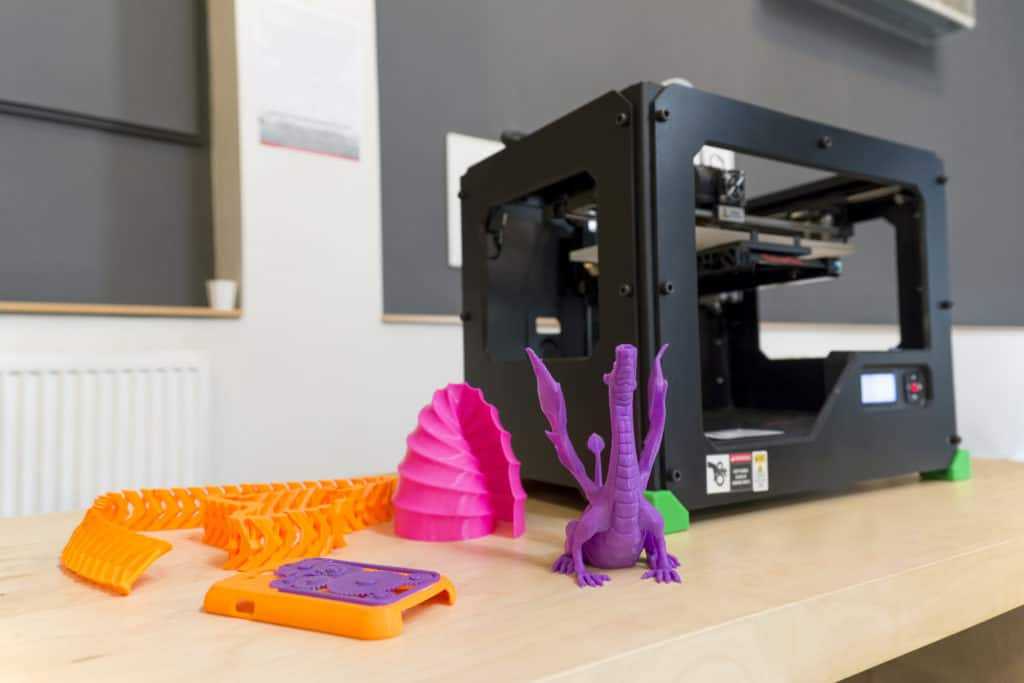
2. Small-scale production
For small-scale production, 3D printing is a godsend. The properties of many materials allow the production of finished components at minimal cost. Compared to traditional production methods, small-scale production using 3D printing is very profitable from a financial point of view. The manufacture of molds, for example, is a lengthy and costly process. At the same time, injection molding itself takes a lot of time. On a 3D printer, you can print a batch of the necessary products in a matter of hours. This application of 3D printing is extremely relevant for frequent orders for small batches of parts.
3. Repair and restoration
Another application of 3D printing is the repair and restoration of damaged parts. For these purposes, 3D printing is ideal. You can carry out such a procedure both independently, with the appropriate skills and equipment, and in specialized 3D printing services, such as 3DDevice. First, a correct 3D model is built on the basis of the damaged product. 3D scanning can also be used to simplify design. Next, the finished model is sent to print and reproduced on a 3D printer in the required number of copies. Repair and restoration of damaged parts using 3D printing is fast, and the presence of a digital model of the component allows you to reprint it at any time.
3D scanning can also be used to simplify design. Next, the finished model is sent to print and reproduced on a 3D printer in the required number of copies. Repair and restoration of damaged parts using 3D printing is fast, and the presence of a digital model of the component allows you to reprint it at any time.
4. Production of functional models and finished components
One of the industrial applications of 3D printing is the production of functional models and finished components. Making products on a 3D printer from a transparent material allows you to see the work of a functional part “from the inside”, which is very useful when developing various engineering samples. In addition, a wide range of different materials for 3D printing turns it into a full-fledged production tool. Industrial 3D printers are gradually becoming a part of every industry, allowing the production of durable metal components.
More questions and answers about 3D printers and 3D printing:
- Opportunities What is the future of 3D printing?
- Finance How to choose the right 3D printer?
5.
 Household items
Household items Need an office organizer? Or a knife holder? Any household items can be printed on a 3D printer. The advantage of this application of 3D printing is that there are no restrictions when developing 3D models. That is, if you want to show imagination and create something original - all the cards are in your hands. Thanks to 3D printing, your home can be decorated and made more functional easily and inexpensively.
6. Toys and souvenirs
Having a 3D printer makes it very easy to make a child happy – just make cute 3D toys. There are already some pretty interesting projects of collective 3D printed games, and in the future this list will only expand. This application of 3D printing will please not only children, but also enthusiastic collectors, because on a 3D printer you can print figures of any characters and attributes of computer games and films. And color 3D printing will make it possible to produce exclusive full-color souvenirs - miniature figurines of real people. To do this, a digital model of a person is formed on the basis of 3D scanning data. In this case, all textures and color data are preserved. Everyone will definitely like such a gift, because getting a tiny copy of yourself is so unusual.
To do this, a digital model of a person is formed on the basis of 3D scanning data. In this case, all textures and color data are preserved. Everyone will definitely like such a gift, because getting a tiny copy of yourself is so unusual.
7. Design products
For creative people, there is another use for 3D printing. 3D technology in general is a unique opportunity to show your talent in the most unusual way. Artists, sculptors, fashion designers and designers from all over the world use 3D printing to create exclusive pieces of art that would be impossible to produce with standard methods. Such designer pieces impress with their beauty and originality, often fusing digital and traditional art. In addition, 3D printing techniques for clothing and footwear are being actively developed. Some models have even gone on sale, but it's too early to talk about mass production.
8. Capabilities of a 3D printer
We have listed the main capabilities of a 3D printer, but they do not end there.